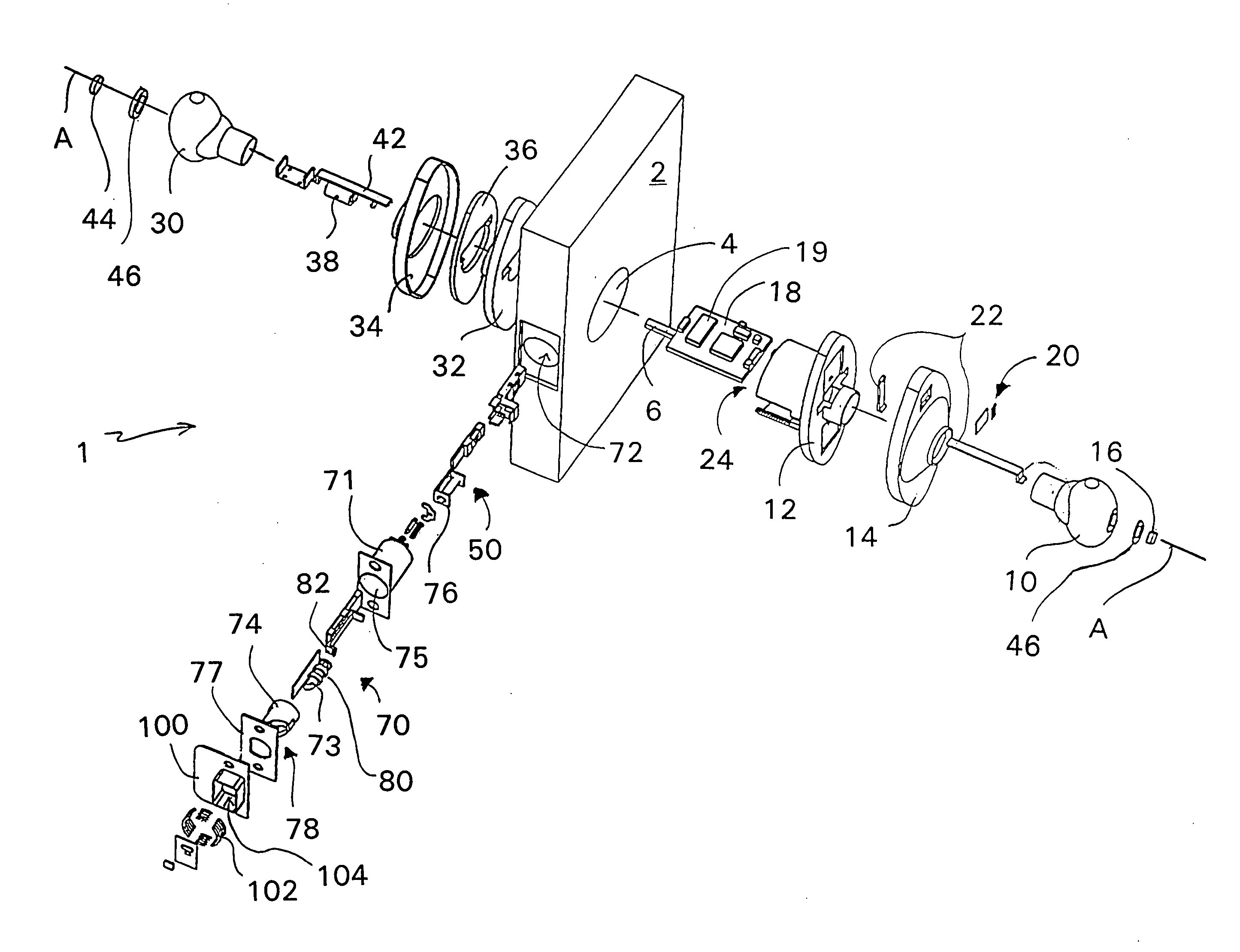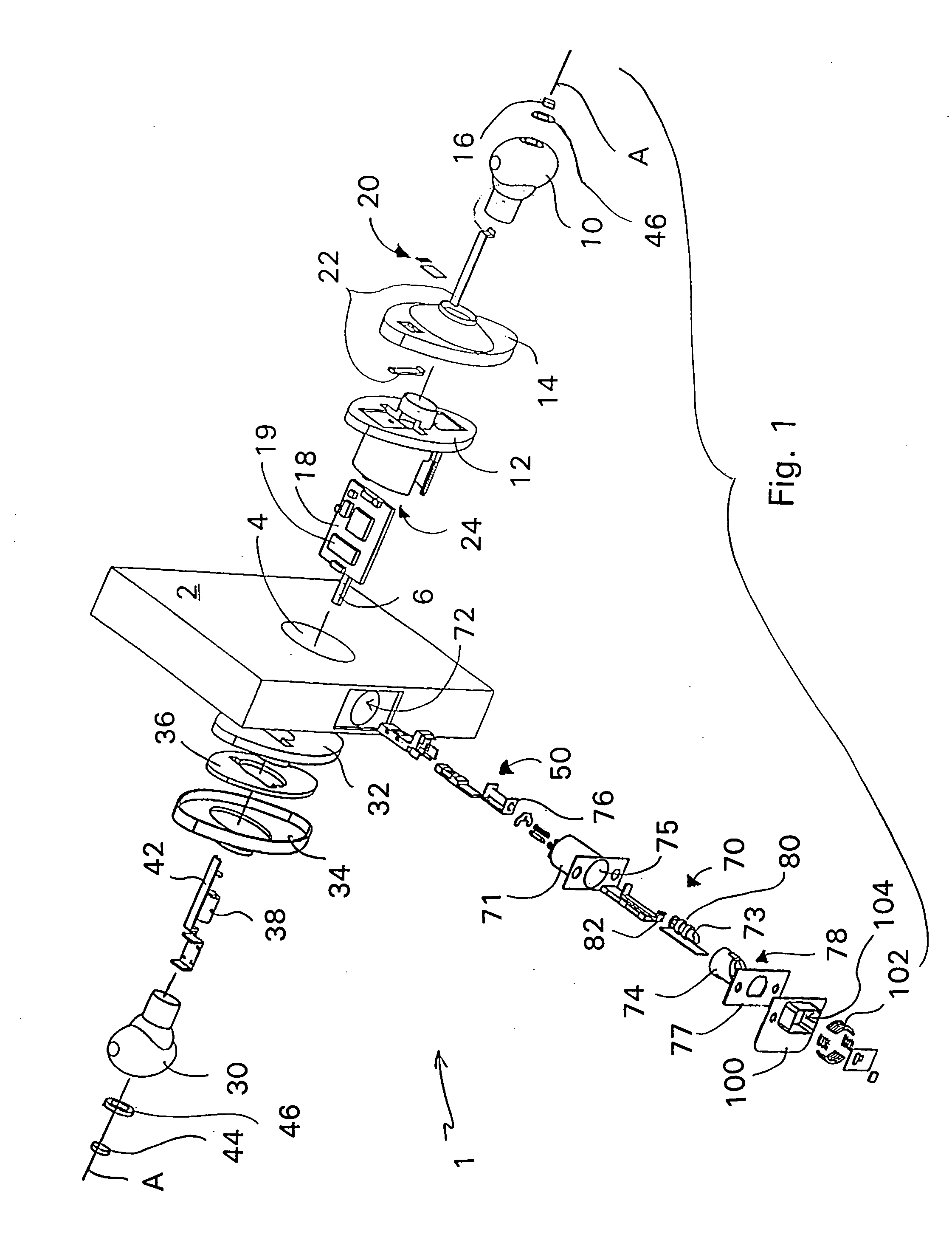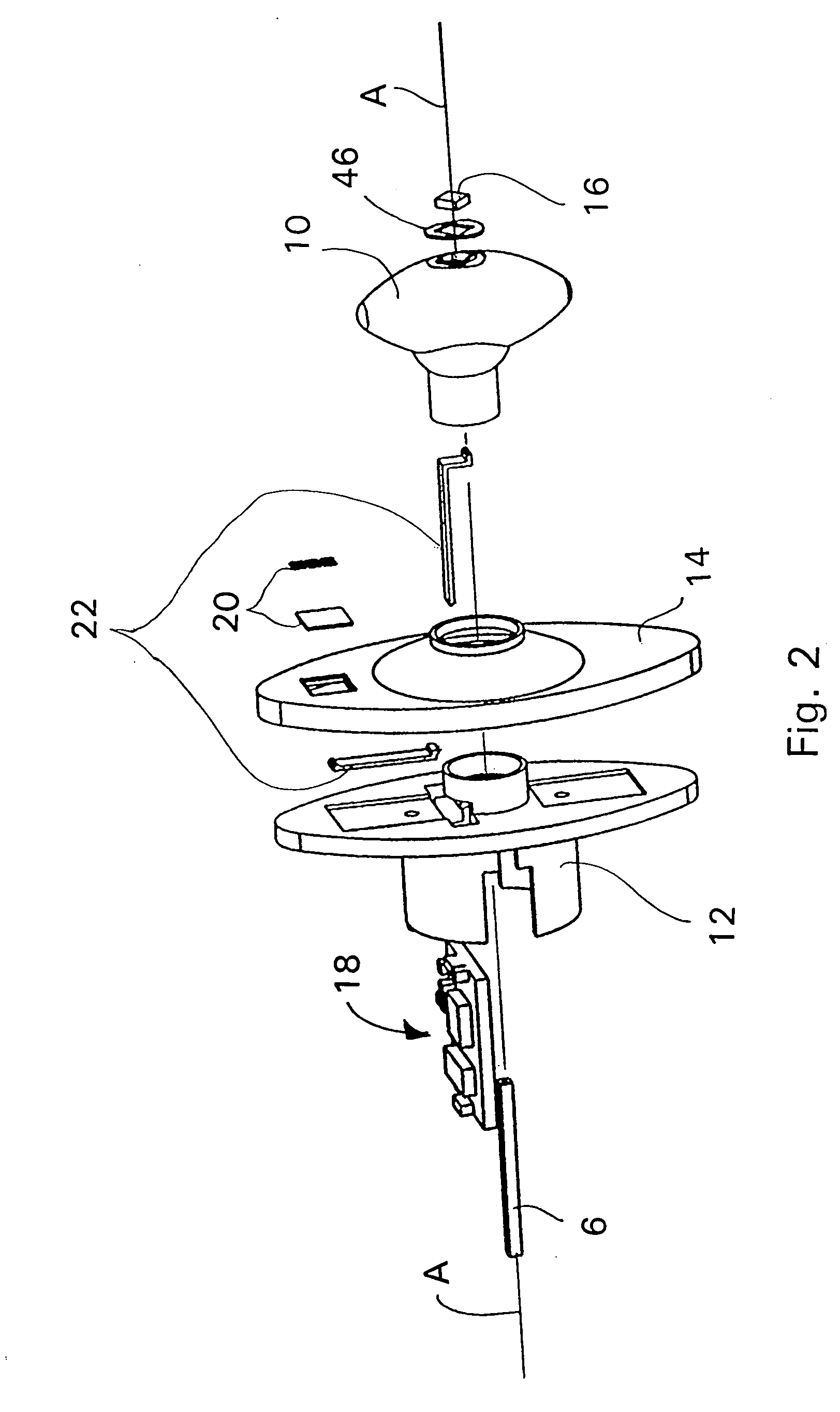Door lock and operation mechanism
a door lock and operation mechanism technology, applied in the direction of process and machine control, anti-theft devices, program control, etc., can solve the problems of difficulty in opening the door, unfavorable installation in a general place, and substantially high pri
- Summary
- Abstract
- Description
- Claims
- Application Information
AI Technical Summary
Problems solved by technology
Method used
Image
Examples
Embodiment Construction
[0035] In general, and observing FIG. 1, the locking doorknob 1 or lever and operation system and mechanisms of the present invention will now be described. As an initial matter, the locking doorknob 1 consists of a first knob 10 or lever on one side of a door 2, and a second knob 30 or lever on a second opposing side of the door 2 as is typical and conventionally known for opening and closing a door. The first doorknob 10 or handle is connected with and supported in a doorknob hole 4 in the door 2 by a first doorknob body portion 12 and the second doorknob 30 or handle is also connected with and supported in the doorknob hole 4 in the door 2 by a respective second doorknob body portion 32. A respective first and second cover plates 14, 34 are interspaced between the respective handles and the body portions, and as is well known in the art, covers the exposed body portions on either side of the doorknob hole 4 mainly for purposes of aesthetics.
[0036] A knob operations shaft 6 which...
PUM
 Login to View More
Login to View More Abstract
Description
Claims
Application Information
 Login to View More
Login to View More - R&D
- Intellectual Property
- Life Sciences
- Materials
- Tech Scout
- Unparalleled Data Quality
- Higher Quality Content
- 60% Fewer Hallucinations
Browse by: Latest US Patents, China's latest patents, Technical Efficacy Thesaurus, Application Domain, Technology Topic, Popular Technical Reports.
© 2025 PatSnap. All rights reserved.Legal|Privacy policy|Modern Slavery Act Transparency Statement|Sitemap|About US| Contact US: help@patsnap.com



